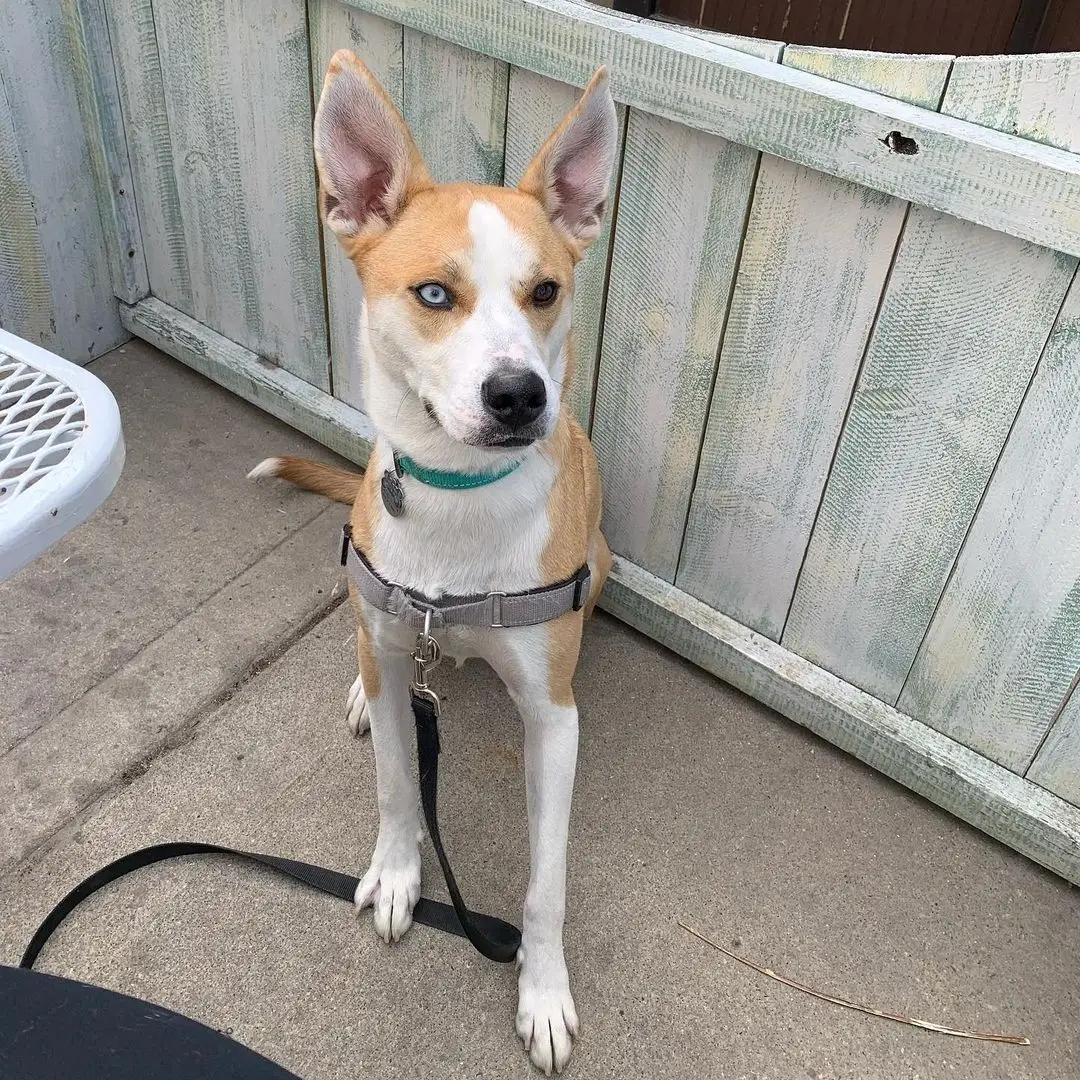Hybrid dogs are surging in popularity, blending favored purebreds into completely original mixes. One intriguing cross is between the Basenji and the Siberian Husky, often nicknamed the “Huskenji”. What results from this union of energetic, independent-minded breeds? Let’s explore the distinctive Basenji Husky mix.
What is a Basenji Husky Mix?
A Basenji Husky mix is a cross between a purebred Basenji and a purebred Siberian Husky. This fusing of lineages combines the yodeling, curl-tailed Basenji with the sled-pulling, thick-coated Husky into a delightful package.
What Does a Basenji Husky Mix Look Like?
- Medium build 20-45 lbs with athletic musculature
- Expressive, almond-shaped eyes in brown, blue, or one of each
- Perky, upright ears resembling either parent breed
- A fluffy, long tail often curled over the back
- Coat thick and short-haired, usually tan, white, black, or tricolor
In appearance, most resemble a miniature Husky marked with Basenji-like facial structure and coloring. Expect a mischievous personality lurking behind those masks as well!
View this post on Instagram
Origin
The Basenji hails from the Congo, while the Siberian Husky is from the Arctic region. The deliberate first-generation crossing of these lively hunting breeds likely began in the last 20 years by breeders seeking to merge their best attributes into the ultimate endurance athlete.
What is the Temperament of a Basenji Husky Mix?
This mix balances the independence and aloofness of the Basenji with the energetic, pack-bonded nature of the Siberian Husky. Skilled ownership, allowing plenty of positive outlets for exercise and mental stimulation helps ensure well-adjusted temperaments. Prior experience with these strong-willed breeds is tremendously beneficial when considering a Huskenji.
Common Health Concerns
Basenji Husky mixes tend to be fairly hearty when responsibly bred. They are likely to encounter a range of health issues, including:
- Eye issues
- Skin allergies
- Hip dysplasia
- Hypothyroidism
Careful health screening of parent breeds paired thoughtfully based on temperament helps mitigate risks. Still expect some stubbornness or manipulative behaviors if bored. These crosses remain better suited to experienced dog owners.
Care and Grooming
If you’re planning to buy or adopt a Basenji Husky mix, you should be prepared to observe the following care and grooming practices:
Regular Exercise
Both Basenjis and Huskies are energetic breeds, so your mix will require plenty of exercise to stay happy and healthy. Aim for at least an hour of vigorous exercise every day, including walks, runs, and interactive play.
Nutritious Diet
Feed your Basenji Husky mix a high-quality, balanced diet appropriate to its age, size, and activity level. Don’t forget to monitor its weight and adjust food intake accordingly to prevent obesity.
Grooming
You should brush your dog’s coat regularly to remove loose hair and prevent matting, especially if it inherits the Husky’s thick double coat. Use a slicker brush or grooming mitt to keep the coat in good condition.
Bathing
Bathe your Basenji Husky mix as needed, typically every 6-8 weeks or when it gets dirty. Use a dog-specific shampoo and thoroughly rinse to avoid skin irritation.
Dental Care
You should practice regular dental care by brushing your dog’s teeth several times a week to prevent plaque buildup and dental issues. Dental treats or toys can also help promote good oral health.
Ear Cleaning
Check and clean your dog’s ears regularly to prevent wax buildup and ear infections. Use a veterinarian-recommended ear cleaning solution and avoid inserting anything deep into the ear canal.
Environmental Considerations
You should provide your furry friend with a comfortable living environment with access to shelter from extreme weather conditions. Basenji Husky mixes may have a high prey drive, so a securely fenced yard is essential to prevent them from escaping.
Nail Trimming
Keep your dog’s nails trimmed to a comfortable length to prevent them from becoming overgrown and causing discomfort or issues with mobility. Trim nails as needed, typically every 4-6 weeks.
Training and Socialization
Start training and socializing your Siberian Husky and Basenji mix early to ensure it develops good manners and is well-adjusted around people and other pets. Use positive reinforcement techniques and provide plenty of opportunities for social interaction.
Veterinary Check-ups
You should schedule regular veterinary check-ups to monitor your dog’s overall health and catch any potential issues early. Vaccinations, parasite control, and preventive care are essential for keeping your mix healthy.
Would a Basenji Husky mix shed?
Yes, a Basenji Husky mix will most likely be a moderate to heavy seasonal shedder. The Basenji has a short, fine coat that sheds very minimally year-round. However, Siberian Huskies have an exceptionally thick double coat that “blows” seasonally, meaning they drop large amounts of fur at least twice a year.
Their shedding levels may be slightly less than that of a purebred Husky overall. But these hybrids still generally drop more hair than a Basenji due to the influence of the Husky lineage on their coat genetics.
How Much Does a Basenji Husky Mix Puppy Cost?
You can expect to pay between $800 to $1500 or more for a Basenji Husky mix puppy. Show pedigrees may cost more. Adoption fees for surrendered adult mixes rescued start from around $250.
Conclusion
Pairing the vocal Basenji with the energetic Husky results in a delightful hybrid for active households. Even with the best nurturing, these mixes often retain some willful tendencies. With consistent training, patience, and a firm yet gentle hand, Basenji Husky mixes can become well-rounded and obedient companions.
FAQs
How big will a Basenji Husky mix get?
20-45 pounds. Males are at the top of the standard. Size depends on which parent they favor.
What health issues does Basenji and Husky mix have?
Eye problems, skin allergies, hip dysplasia, and hypothyroidism are the most common. Buying from health-tested parents is critical.
Does the Basenji Husky mix bark a lot?
This dog tends to make various howling, yodeling, and rooing noises more than barks or traditional loud vocalizing unless bored.
Is the Siberian Husky Basenji mix easy to train?
Their intelligence allows them to learn quickly but their independence complicates obedience or housetraining. Early socialization helps counter stubborn streaks. Rewards-based training is ideal.
